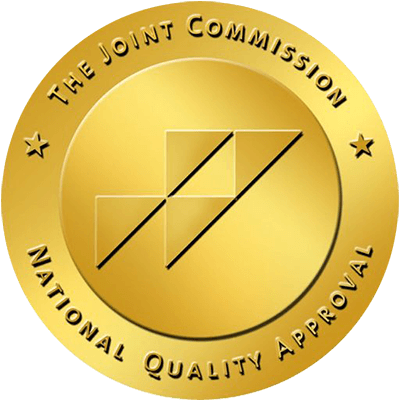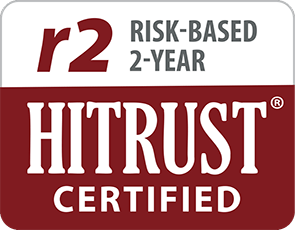Written by Ashley Kane,
Brightside Health
7 Minute Read

Medically reviewed by:
Conor O’Neill, PHD
Assoc. Director of Therapy
10 Minute Read

September is National Suicide Prevention and Awareness Month in the U.S. and September 10 is World Suicide Prevention Day, which means you may be hearing a lot about suicide prevention in early fall.
For us at Brightside Health, the prevention of suicide isn’t a monthly conversation or tied to a specific day. It’s something that we work on every day. And it’s a mission we take very seriously. So before we dig too much deeper, here’s a quick but vital reminder:
Brightside Health can help treat severe mental health symptoms, including suicidal ideation (general thoughts about ending your life). If you have a plan, intend to harm yourself, or are in crisis, please call 988.
If you are not in immediate crisis but would like to see how we can help, start with a free assessment.
There is a good reason that we feel strongly about the relationship between suicide and mental health. Here are a few key statistics from the National Alliance on Mental Health:
- Suicide is the 2nd leading cause of death among people aged 10-34.
Suicide is the 12th leading cause of death overall in the U.S. - 46% of people who die by suicide had a diagnosed mental health condition.
- 90% of people who die by suicide may have experienced symptoms of a mental health condition, according to interviews with family, friends and medical professionals.
In other words, suicide is a major problem, and it’s tightly linked to overall mental health. Most importantly, there is often something that can be done to help people who are experiencing suicidal thoughts. It starts by talking about it. Here are 5 facts to get us started:
Talking about suicide does not cause suicide
It might seem as though avoiding talking about suicide is a good idea: What if we put the idea of suicide into someone’s head? The thing is, many studies show that that’s not how it works.
According to a study at the University of Nevada, “asking someone if they are having thoughts of killing themselves is actually more likely to save a life. In addition, most people who are thinking about suicide are at least somewhat ambivalent about it, and research also shows that almost all deaths by suicide are preceded by warning signs of some sort.” This indicates that it’s something we should talk about a lot more frequently.
When someone is having suicidal thoughts, it can feel very isolating. It may even feel as though they are all alone. This means that it’s a good time to remind them that they are not.
Suicidal thoughts can affect anyone
Speaking of not being alone, anyone can have suicidal thoughts. They can be scary and unsettling, but they are not uncommon. In fact, the National Alliance on Mental Health suggests that:
- About 5% of all adults
- Over 11% of those between 18-25
- Nearly 20% of high school students
- 45% of LGBTQI youth
have serious thoughts of suicide each year.
When you consider why most people experience suicidal thoughts, those numbers come into focus. Many people who consider suicide want to escape some sort of pain or problem they have experienced.
This might be physical, emotional, social, or another type of pain. In many cases, the individual doesn’t want to end their LIFE, they only wish to end the pain they are in. This sometimes becomes the root of a suicidal crisis because they may not see a way out of problems they are facing.
It can be easy to forget that there are other ways to manage intense pain when you are hurting. Know that there are other ways to handle that pain and continue to live. Many suicide prevention programs center on finding and beginning to address the source of pain. This starts with reaching out for help at 988.
There are signs to look out for
For friends and family members, there are signs to watch for that suggest that someone is at risk of a suicidal crisis and in need of urgent help. These include:
- Talking about wanting to die or wanting to take one’s own life
- Giving away treasured possessions
- Writing goodbye letters
- Talking about feelings of despair and hopelessness
- Preparing for death in some way, like by giving away or selling personal items
- Self-isolation from family, friends, and other loved ones
- Mood swings
- Difficulty concentrating
- Loss of interest in daily activities or things one used to enjoy
- Changes in appetite and eating patterns
- Over or undersleeping
- Changes in appearance such as not brushing one’s hair, teeth, etc.
- Increased or new usage of alcohol and drugs
- Becoming more impulsive
- Talking about feeling trapped or in pain
- Self-harm
- The creation of a suicide plan
If you or a loved one is experiencing any of signs of suicidal ideation, it is time to have an honest talk about suicide and seek professional help.
Treatment is available, and it works
In the midst of a crisis, anyone in the U.S. can call or text 988 (the Suicide & Crisis Lifeline). This can mobilize emergency responders to help quickly. There is substantial evidence that therapy and other mental health treatment is very successful in helping those that are experiencing suicidal thoughts; in helping to relieve the pain that underlies the thoughts themselves.
Additionally, creating a safe and supportive environment is important. Professionals can help with this. Creating a safe, supportive environment allows you time and space between a suicidal thought and the ability to act on that urge or thought in a dangerous way. Safety planning is a strategy that can help keep people safe in the moment and includes a number of strategies and resources for individuals to use. You can start to create a safety plan and share it with yourself or others here.
There are a lot of stories of hope and recovery
We think the most important thing to know about suicide is that there are many stories of recovery and unlimited reasons for hope. In fact, one study from Harvard found that 90% of those who survive a suicide attempt at some point in their lives do NOT ultimately die by suicide. In fact, in this study, over 70% never made another attempt.
For those looking for hope, there are dozens of incredible stories posted on the Suicide & Crisis Lifeline’s website. These survivors share their inspiring stories and many have a common theme: talking about suicide can help.
Brightside Health can help treat severe mental health symptoms, including suicidal ideation (general thoughts about ending your life). If you have a plan, intend to harm yourself, or are in crisis, please call 988.
If you are not in an immediate crisis and would like to see how we can help, start with a free assessment.













